
How to Reduce Customer Churn in 10 Proven Ways
You may have noticed that your customers are slowly ceasing to use your products or services, resulting in a significant decline in your revenue. This phenomenon is known as customer churn.
Customer churn may happen for various reasons, such as poor support, a lack of commitment, unmet expectations, and pricing issues.
If you are aware of the cause, then you have a better chance of addressing the issue. However, what if you cannot determine the reason for this occurrence?
Don’t worry; we’re here to help with proven tips and guidance. Read on to solve your problem.
Let’s begin!
Churn in different perspectives
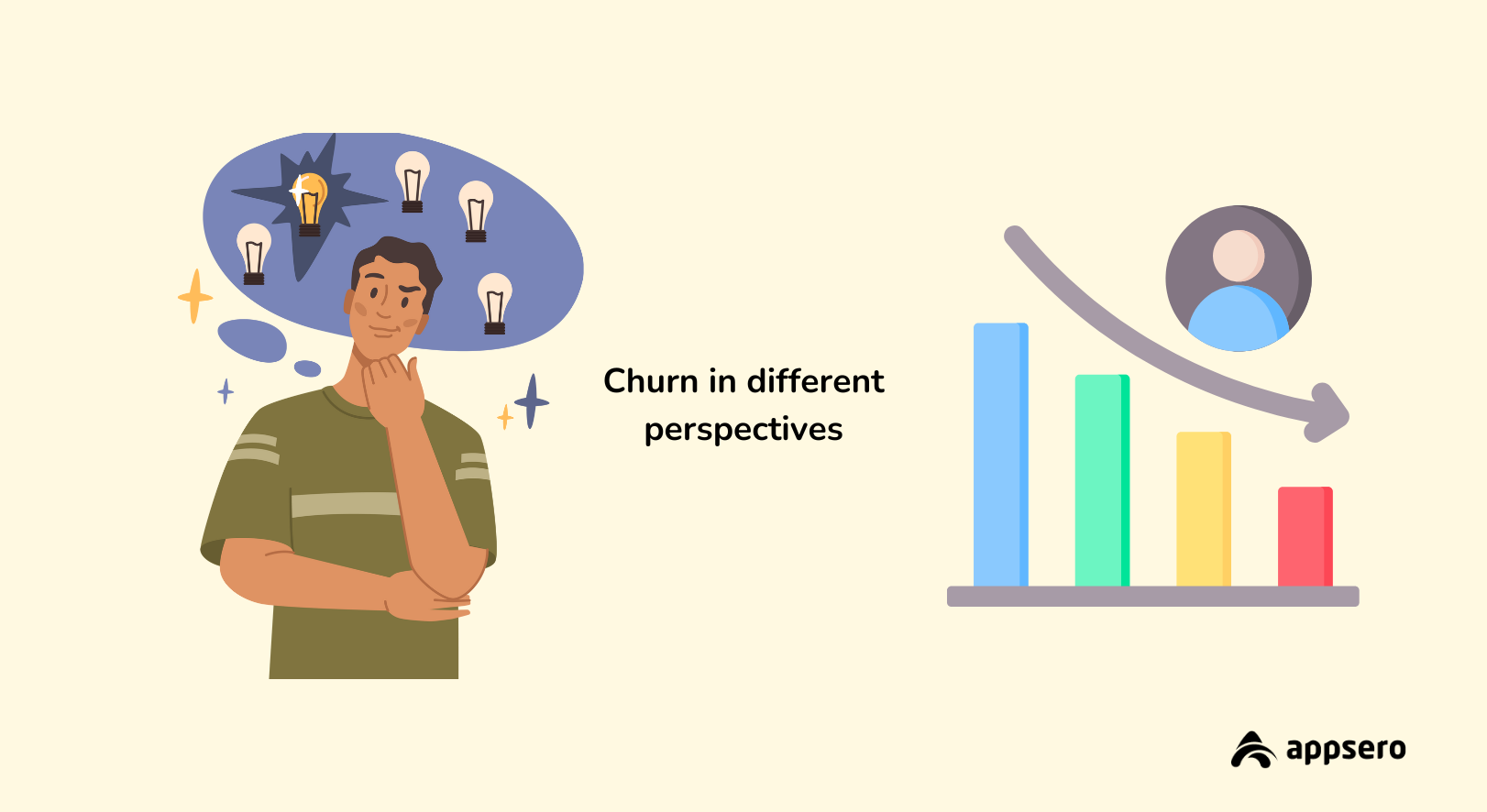
Generically, there are different meanings to “churn.” For example, employee churn, customer churn, or any metaphorical terms. Since we’re going to cover the topic of product marketing, we’ll explain customer churn.
Therefore, in marketing, churn means when a user stops using your products or services. To extend the context, let’s get into detail:
What is a customer churn?
In businesses, particularly those with subscription models, churn refers to the rate at which customers stop using a product or service. This can happen for various reasons, such as dissatisfaction, finding a better alternative, or simply no longer needing the service. A high churn rate can negatively impact revenue and growth, making it a crucial metric for businesses to track and try to minimize.
What is the customer churn rate?
Customer churn rate, also known simply as churn rate, is a business metric that measures the percentage of customers who stop using a product or service over a given period. It is a crucial metric for businesses. Especially in industries with subscription-based models, it indicates the rate at which customers leave or discontinue their relationship with the company.
How do I calculate customer churn rates?
Let’s see how to calculate the customer churn rates.
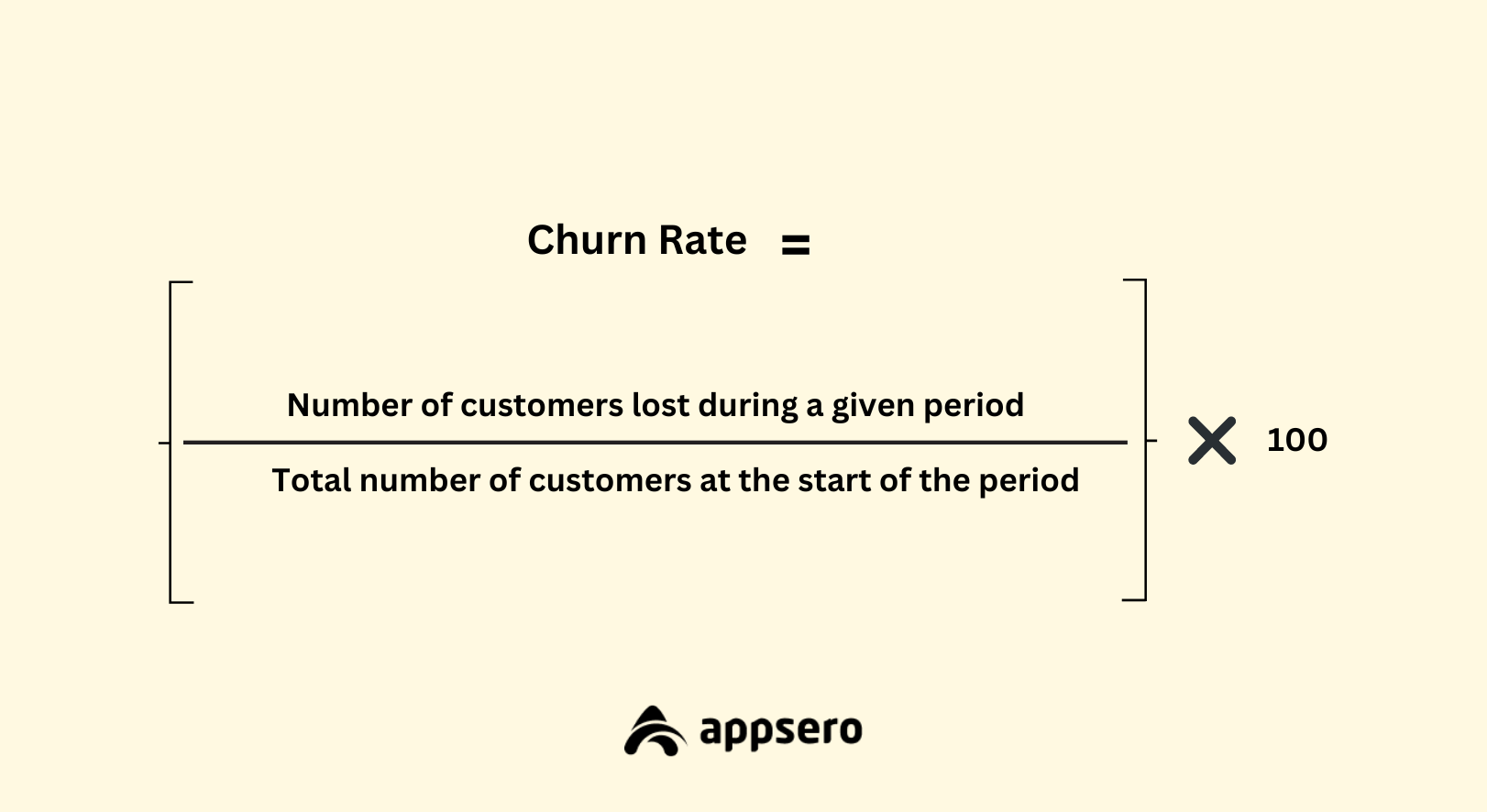
For example, if a company starts the month with 1,000 customers and loses 50 customers during that month, the churn rate would be:
Churn Rate=(1,000/50)×100=5%. So this is considerably high.
Let’s check out an example: Apple TV+ reportedly has a monthly customer churn rate of around 15.6%. That indicates its subscribers withdraw their subscriptions each month. This rate is considered fairly high compared to some other streaming services and could be due to factors such as a limited content library, a lack of original content, or competition from other platforms.
However, it’s important to note that various factors can affect churn rates and may not always accurately indicate a product’s overall success.
Types of customer churn
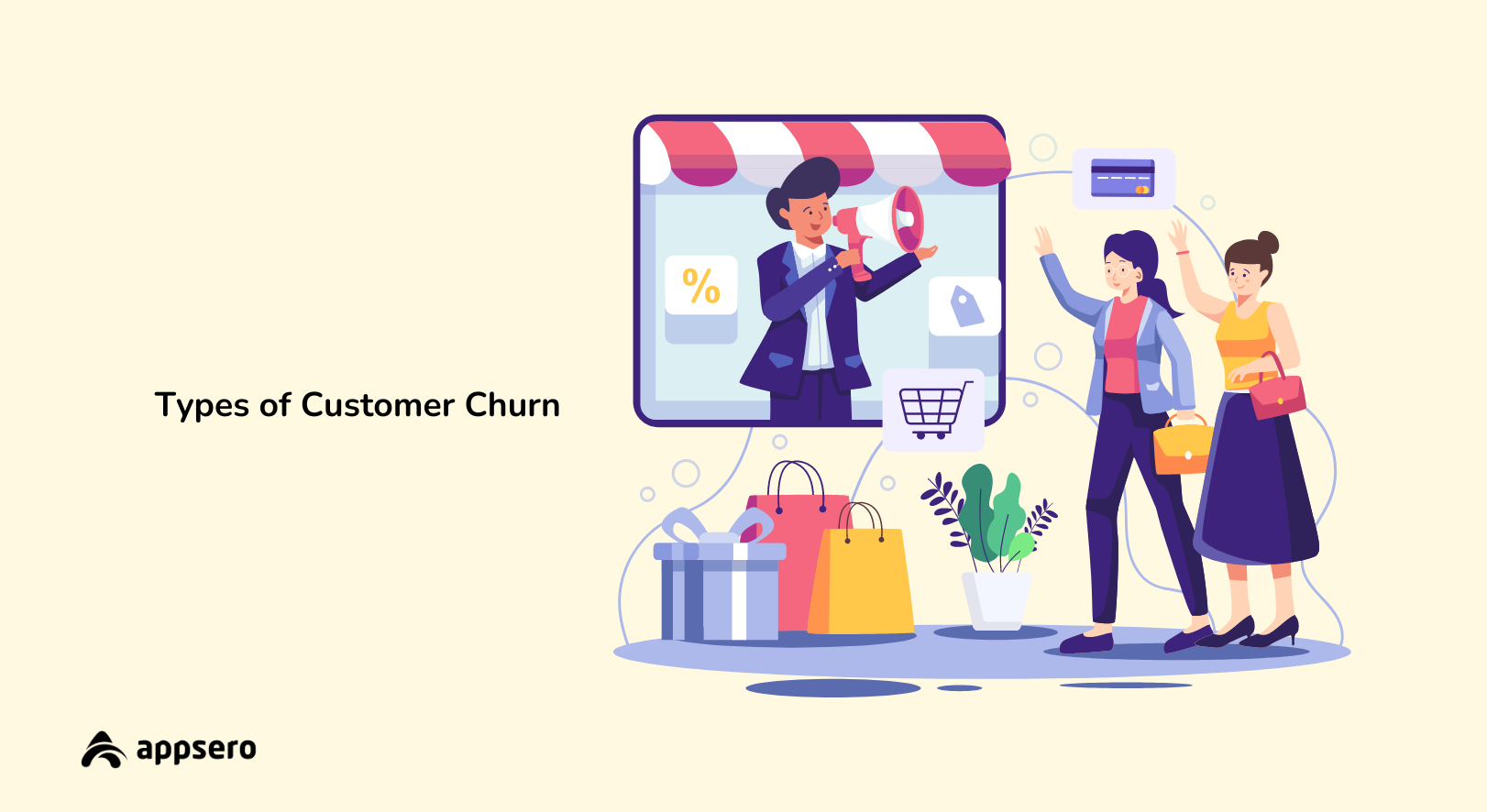
Well, let’s get more into the depths of customer churn. Suppose, after calculating the customer churn rate, you see that the amount is higher than you expected. But you don’t know the actual reasons behind it. It’s frustrating for a business owner.
In that case, you may be required to know the types of customer churn. It will help you categorize your customer-related issues depending on the churn type. Also, you can create a funnel on your own for further analysis. Let’s check out some common types of customer churn:
1. Voluntary churn
It happens when customers choose to leave freely, often due to dissatisfaction with the product, service, or pricing.
Indication: If anyone cancels subscriptions, closes accounts, or switches to a competitor.
2. Involuntary churn
It happens when customers are forced to leave due to circumstances beyond their control, such as relocation, financial difficulties, or changes in business requirements.
Indication: Non-payment or account closure due to policy changes
3. Deliberate churn
When businesses intentionally decide to discontinue services for certain customers, perhaps due to unprofitable relationships or strategic shifts,.
Indication: ending contracts, discontinuing services for specific customers.
4. Unintentional churn
When customers leave unintentionally due to issues such as billing errors, technical glitches, or miscommunications.
Indication: Unintended cancellations or misunderstandings leading to account closure.
5. Acquisition churn
It happens during the onboarding process or shortly after acquiring a customer, often due to a poor onboarding experience.
Indication: high churn rates in the early stages of customer acquisition.
6. Competitive churn
When customers switch to competitors who offer better products, services, or pricing.
Indication: increased competition leading to customer migration.
7. Customer lifecycle churn
It occurs at specific stages of the customer lifecycle, such as after a trial period or post-contract renewal, etc.
Indication: Churn rates vary at different stages of the customer journey.
8. Situational churn
Situational factors like global events, regulatory changes, or economic downturns are what cause churn.
Indication: A mass departure of customers during specific economic or environmental conditions
9. Feedback-driven churn
The main reasons for this churn are that customers leave due to unaddressed feedback, dissatisfaction, or poor customer service.
Indication: Negative feedback or customer complaints
10. Operational churn
This churn results from operational issues within the company, such as service outages, product defects, or logistical problems.
Indication: Increased churn during periods of operational disruption
Why does customer churn matter for a business’s growth?
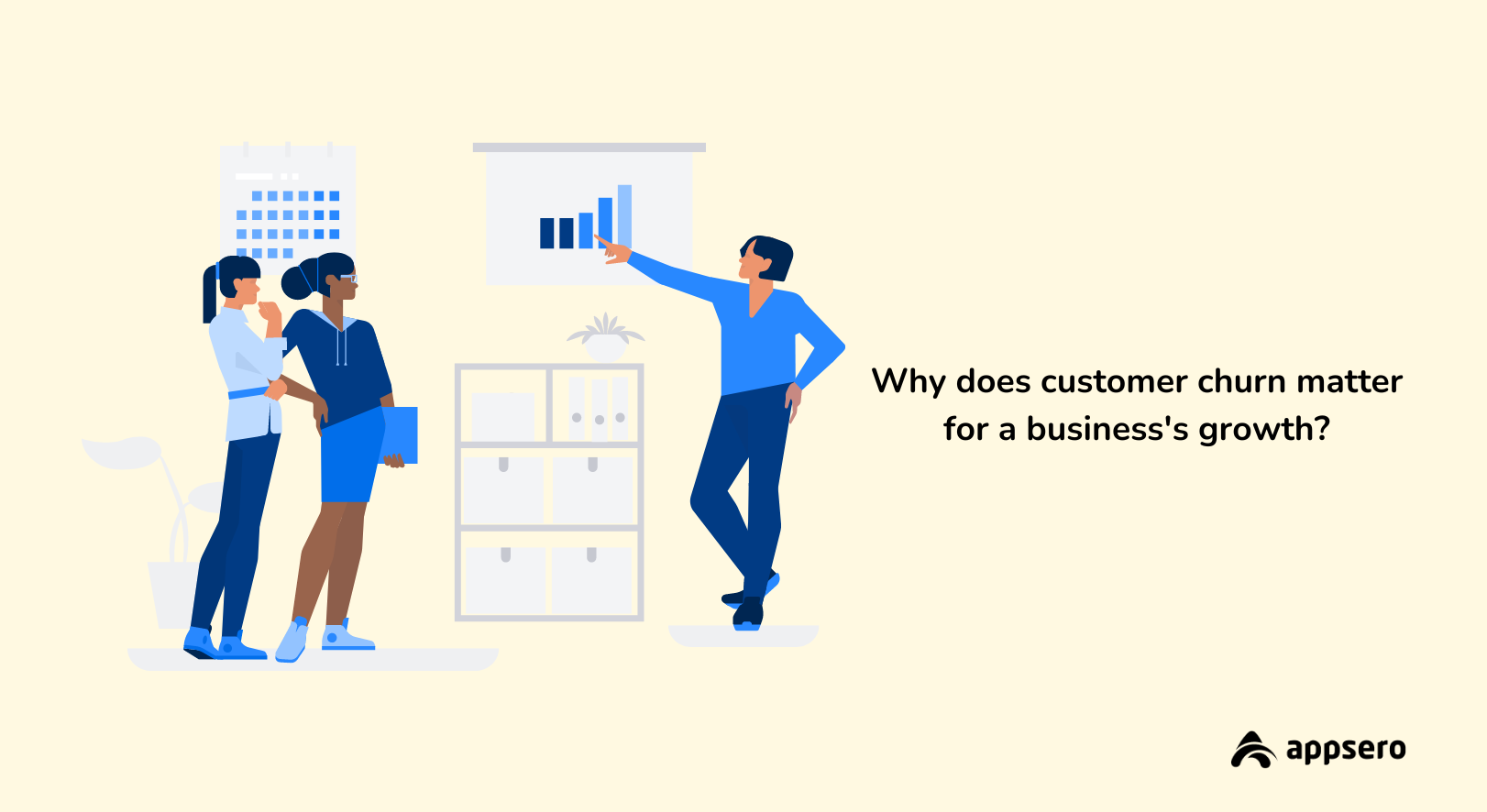
Customer churn, the rate at which customers abandon a product or service, wasn’t always a top business concern. But to survive in today’s hyper-competitive market, it’s become a critical metric to identify the loopholes.
Here are more reasons that you should consider:
#1. Create a chance to double revenue
Every lost customer is a missed opportunity for future revenue. This is especially true for subscription-based businesses, where churn can directly impact recurring income. Recent studies suggest churn can cost businesses up to five times the cost of customer acquisition, making retention a lucrative strategy.
#2. Helps to nurture existing customers
Replacing lost customers is expensive. Marketing and sales budgets get stretched thin, and the constant churn cycle can hinder long-term growth. A recent McKinsey report found that acquiring new customers can be 5–25 times more expensive than retaining existing ones, highlighting the financial advantage of minimizing churn.
#3. Creates scopes to improve customer service
High churn rates often point to underlying issues with the product, service, or customer experience. In a 2024 survey by Zendesk, 67% of respondents cited poor customer service as a reason for churn, emphasizing the need for proactive customer engagement.
#4. Creates concern about customer data and insight
When a business loses its customers, it also loses valuable data and insights about their behavior and preferences. This makes it challenging to personalize offerings and optimize the customer experience for future success. According to a 2024 report by Forrester, companies with effective customer retention strategies report a 15% increase in customer lifetime value compared to weaker retention programs.
#5. Motivates business to build a long-term business
Minimizing customer churn is not just about achieving short-term gains. It’s about creating a sustainable business. By nurturing long-term customer relationships and providing them with ongoing value, you lay the groundwork for lasting success. Companies with effective customer retention strategies are 80% more likely to meet their long-term financial objectives, according to a KPMG study from 2024.
What are the common reasons behind customer churn?
Customer churn can result from various factors, and the reasons behind it are often complex and multifaceted. Understanding these reasons is crucial for businesses to implement effective retention strategies. Here are some common reasons behind customer churn:
- Poor customer service
- Product or service dissatisfaction
- Competitive offerings
- Price sensitivity
- Lack of engagement
- Billing and contract issues
- Changes in customer circumstances
- Lack of Personalization
- Technical issues
- Poor onboarding experience
10 Effective ways to reduce customer churn
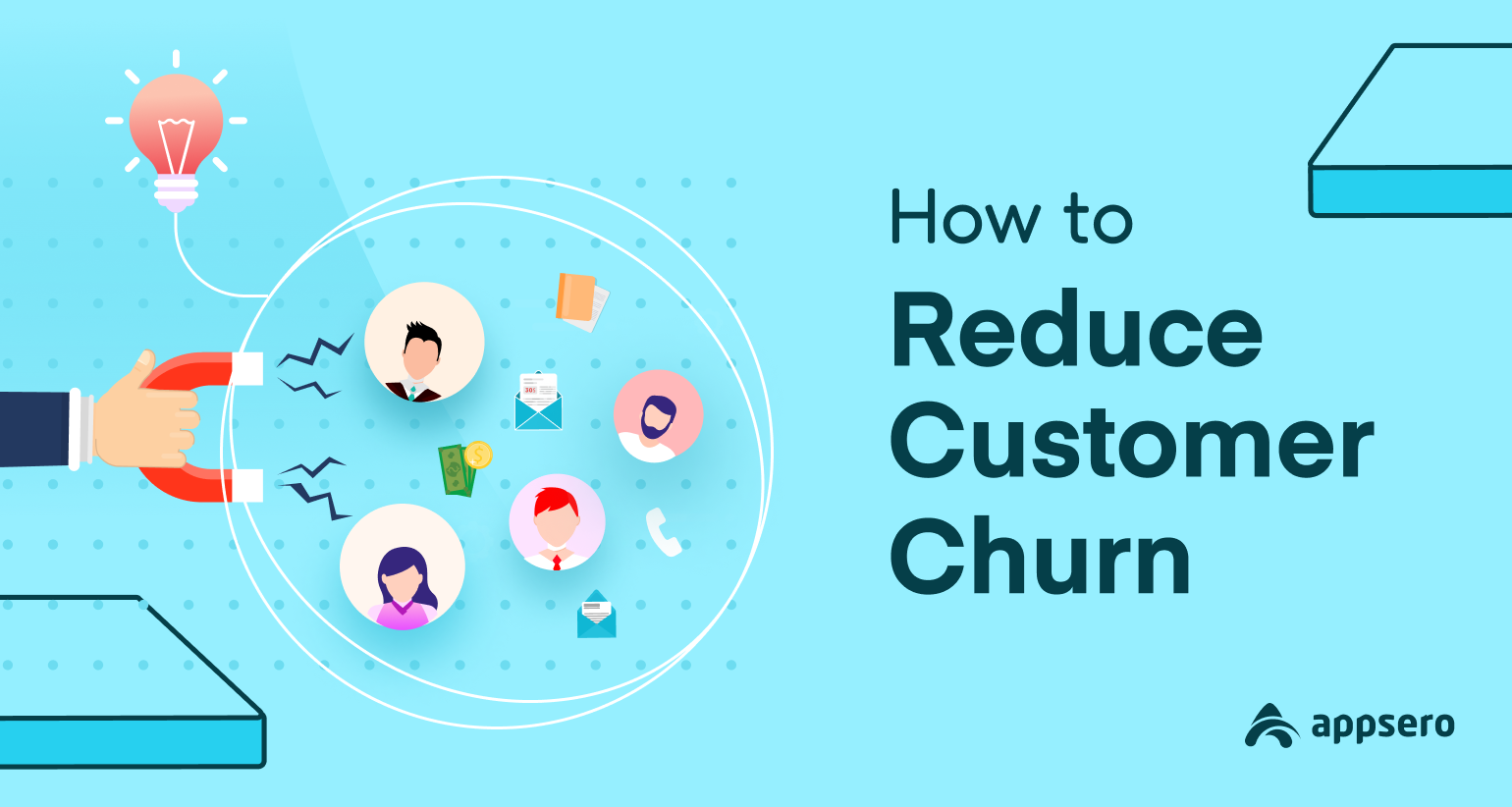
Reducing customer churn requires a well-defined approach focused on proactive customer engagement and satisfaction. By investing in customer success, education, and regular check-ins, you can promote lasting relationships, enhance customer loyalty, and ultimately minimize churn.
Let’s have a look at the proven ways of reducing the churn rate.
01. Analyze your customers’ queries
The first and foremost initiative that you should take is to analyze your customer queries. You can compile them in different formats for better understanding—for example, complaints, feature requests, support delays, proposals, etc. Identifying common pain points allows you to address them and prevent future churn proactively.
52% of customers globally believe that businesses must act on customer feedback, according to a Microsoft study.
Also, you can get help from different tools to automate the process. You can get it from a survey form, from developing a dedicated landing page, or from the customer support end. Whatever you do, just make sure you have the right customer queries to work on.
02. Find out what you’re giving better than your competitors
Understanding your unique value proposition and communicating it effectively is crucial. Clearly articulate what sets your product or service apart from competitors to reinforce customer loyalty.
For that, you need to figure out what sets you apart from the competition. And then focus on amplifying those unique strengths that resonate with your target audience.
According to a survey by Salesforce, 73% of customers say that an extraordinary experience with one company raises their expectations of other companies.
For instance, you can research your competitors’ offerings and messaging. This helps you understand your position in the market and identify areas where you can differentiate yourself.
03. Prioritize personalization marketing approaches
We all know the importance of personalized marketing strategies. The segment group studies it. They found that 49% of consumers reported making impulse purchases after receiving a personalized experience.
Here is an example below: I got the email since I’m a fitness enthusiast. I tried the Freeletics app. And then, after a while, they sent this email to me. In this email, they used a GIF, where their main intention is to inspire users to improve their fitness levels. So I can recommend that this type of personalized email is effective and increases the chance of reducing customer churn rates.

Now let’s talk about the general facts about personalized marketing approaches. It builds the customer experience, builds a stronger connection, and increases customer loyalty. Use data to tailor interactions, recommendations, and communication based on individual preferences.
04. Provide incentives to your lost customers
To reduce churn rates, you can offer incentives to your customers. There are many ways to implement this technique, one of which is through email marketing. By collecting the email addresses of your customers, you can create a campaign with an attractive subject line and compile an appealing offer to encourage them to stay with your company.
Offering special promotions, discounts, or exclusive offers can reignite interest and demonstrate a commitment to customer satisfaction. A study by accenture found that 83% of consumers are more likely to remain loyal to a brand that offers a loyalty program.
Here is an example that we can share with you now. It’s a campaign from TubeBuddy. They addressed their users as “rising stars.” Plus, they provided a discount by giving some special access to their tools.

05. Provide the future roadmap of your products or services
Your product should have a roadmap to inform users about upcoming features and functions. This transparency instills confidence in customers about the company’s commitment to innovation and improvement. When users know the roadmap in hand, they are more likely to stay as customers.
In a survey by PwC, 73% of respondents identified customer experience as an important factor in their purchasing decisions.
A proper customer journey is essential to building a good customer experience. Providing a clear roadmap of products or services helps achieve this.
06. Catch those customers who like to churn
Here, I’ll suggest you do a predictive analysis for your products. For instance, you may need to get help from some third-party tools. Gartner shared that companies that invest in predictive analytics for customer retention can reduce churn rates by 25%.
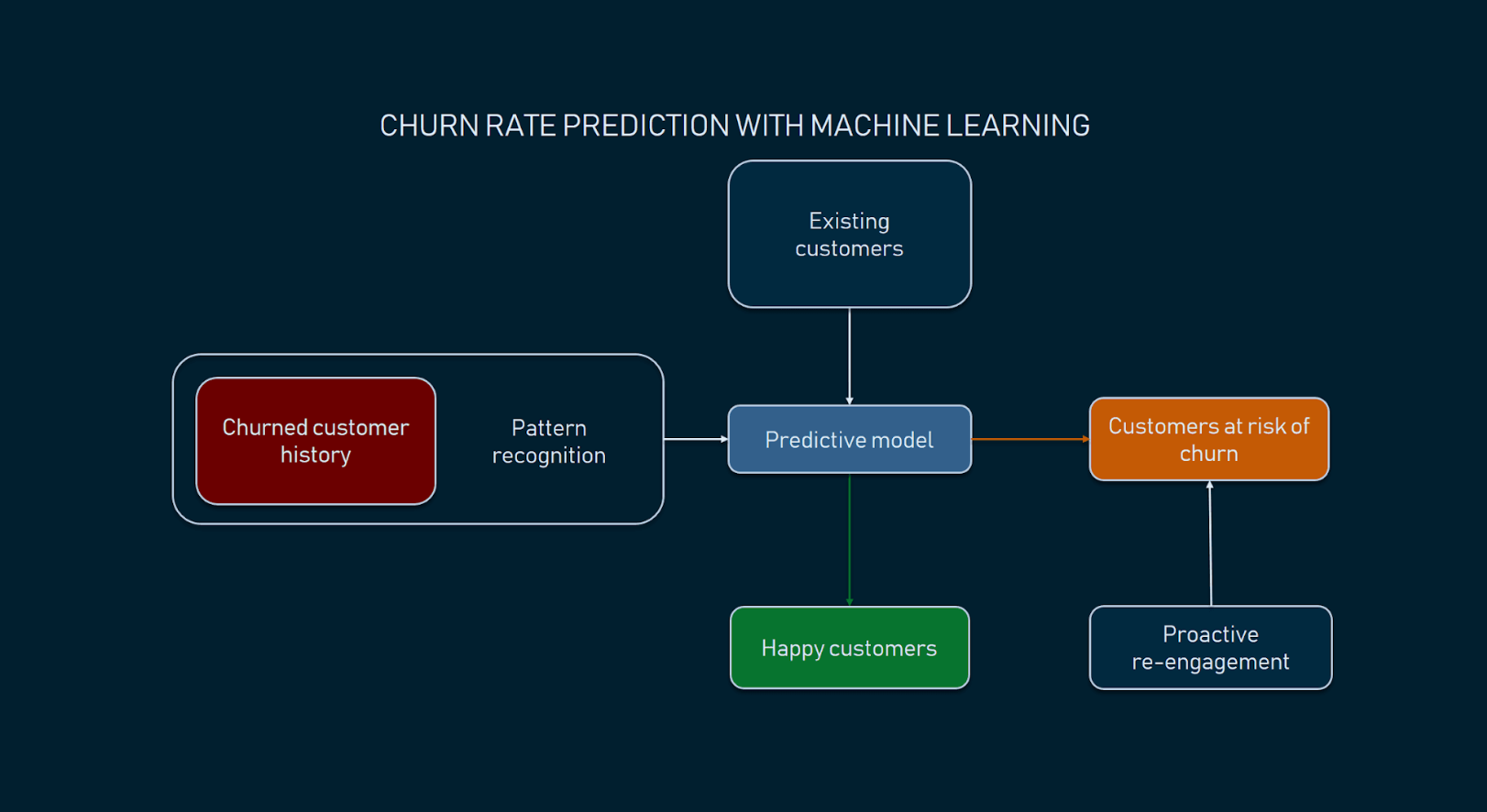
In the image, you can see the churned customer history. Depending on your customer list, you can categorize them following this chart. Or you can come up with another structure or format that aligns with your business goals and vision.
07. Create a community to solve their problems
Creating a customer community involves developing a platform, like forums, social media groups, or online communities, where customers can come together to interact, share their experiences, and assist one another. This approach encourages collaboration, empowers customers to find solutions on their own, and cultivates a sense of belonging.
According to a survey by Lithium Technologies, 89% of consumers said they would stay more loyal to a brand that shared their values.
We suggest launching an online community where users can share their tips, troubleshoot issues, and offer feedback. This will help lessen the load on the customer support team while creating an active community where users can assist each other. This will boost customer satisfaction and provide the company with valuable user-generated content.
8. Be more smart with your email marketing efforts
Being smart with email marketing involves segmenting campaigns based on customer behavior, preferences, and engagement levels. Delivering targeted and relevant content through personalized email campaigns enhances customer engagement and loyalty.
Let’s see the reminder email from AISEO. What they did was just ask, “Did you miss our announcement on Friday?” The approach is quite smart and impressive. So what you can do is, after analyzing the customers who are inactive or more likely to churn, create a campaign like this one. It might help you to reduce the churn rate.

Also, you can analyze the purchase histories to understand their preferences. And then send personalized product recommendations through email campaigns. According to Statista, personalized email campaigns had an open rate of 18.8%, compared to 13.1% for non-personalized campaigns
09. Ensure an organized customer onboarding and training system
Having a well-structured onboarding process is crucial to ensuring that customers have a smooth introduction to your product or service. This process should include providing clear guidance, interactive tutorials, and personalized training sessions, tutorials, documentation, videos, etc. to help customers understand how to use the offering effectively.
By doing so, you can greatly reduce the chances of early customer churn due to confusion or dissatisfaction.
In a study by Gainsight, companies with a well-structured onboarding process experienced 10% higher retention rates
Here is an email from HubSpot. Here, they provided an email on how to use their support ticket system. This way, they are educating their users and engaging them. So it can be a great way to reduce customer churn rates.

10. Frequently check customer happiness score
Businesses can gain valuable insights into customer sentiment by regularly assessing customer satisfaction through surveys, feedback, and other metrics. These tools, including surveys, feedback forms, and key performance indicators (KPIs), can help businesses identify areas for improvement and address issues promptly, ultimately leading to an improved customer experience.
According to CustomerGauge, companies with high Net Promoter Scores grow at more than twice the rate of competitors with lower scores
Businesses can use sentiment analysis to understand the general sentiment of their customer base. By doing so, they can identify areas where they excel and pinpoint aspects that may require improvement. This continuous monitoring helps businesses stay in touch with customer needs and preferences, facilitating a more responsive and customer-centric approach.
Some experts’ opinions regarding customer churn
Here are some of the experts’ opinions about customer churn and how they handled the issues over the years. We have compiled some of their experiences as tips. Have a look now!
CASEY HILL
Bonjoro, Head of Growth
We make sure to send a personalized video email to every new customer. This helps in creating a positive and lasting impression right from the start, making the customer feel valued and not just like another number. We have observed that customers are more likely to respond and ask questions once they feel a personal connection with us.
Andy Crestodina
Orbit Media Studios | Co-founder / CMO
Arrange one-on-one conversations with your customers to better understand their product usage, preferences, and pain points.
Darrell Evans
Yokel Local | Co-founder
Create a simple-to-follow engagement plan to ensure customer success beyond the initial setup.
Robert Johns
UNINCORPORATED | Director of Operations
At our agency, we prioritize truthful and respectful communication when providing feedback to both our colleagues and clients. Our goal is to establish a collaborative relationship with our clients as a partner rather than just a service provider. We believe that honest feedback, even when it may be difficult, is one of the key elements in building that type of relationship.
Kent J Lewis
Anvil | President
Twice a year, I conduct bi-annual check-ins with all 35 clients to discuss our overall relationship, identify areas for improvement, and review longer-term strategies. These check-ins not only help with client retention but also help identify growth opportunities for the business. During these conversations, we also take the opportunity to catch up personally.
How Appsero can help you mitigate customer churn rate
Before we show how Appsero helps reduce customer churn rates, we want to briefly talk about it. Appsero is a developer-centric product. It aims to help plugin and theme developers manage multiple things to ease their tasks. Things like feature comparison, auto-deployment, software licensing, WordPress analytics, and deactivation auto-responder.
So after you add a plugin or theme in Appsero, your users will get a pop-up window if they want to deactivate the plugin or theme. Like below!

After collecting data from the deactivation autoresponder from Appsero, you can get a separate report page for it. All the details are given here. So you can analyze and research the behavior, and take the next step for the customer churn.
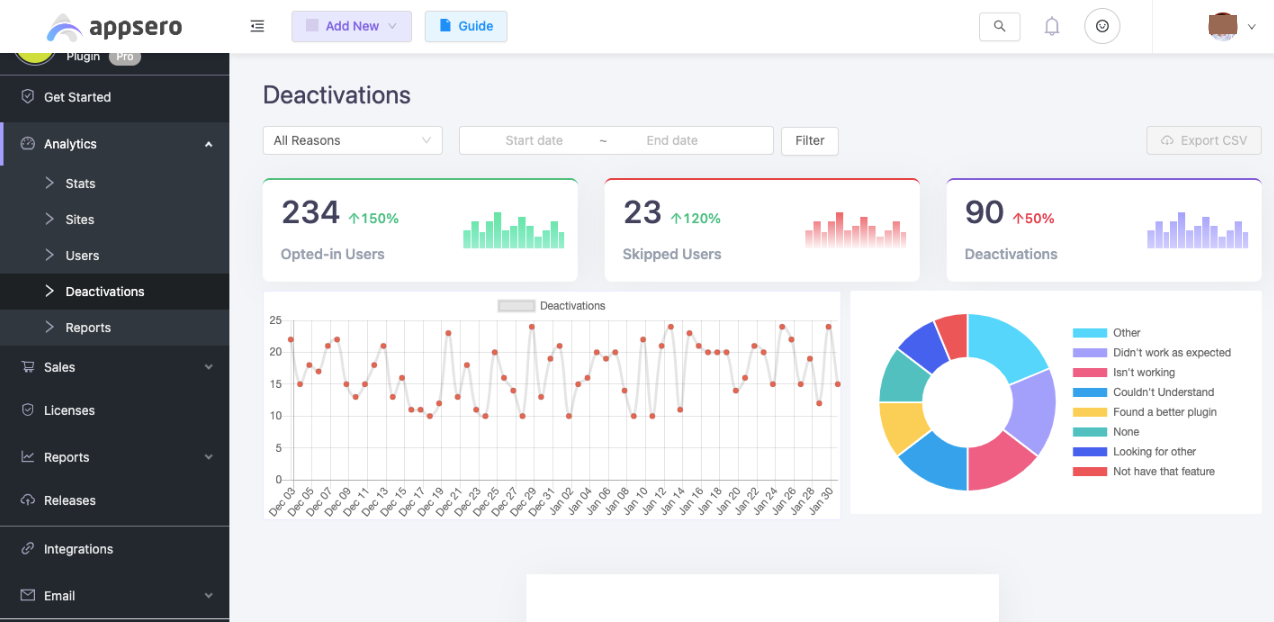
A detailed guide on how to run a fruitful customer feedback survey: 5 ways to follow
Final words
Now that you have learned about customer churn, including when it occurs, how to identify it, and how to measure it, you can take action to reduce it. If you are someone who is determined to minimize customer churn rate, then you should follow the process that was discussed earlier.
Now, how do we get started? Let’s recap:
- Understand your customer queries
- Compare your lost customers from the previous month with the current
- Calculate the churn rate
- And then apply the tips one by one
- Utilize Appsero for your plugin or themes to understand customer queries and work on it
Subscribe To Our Newsletter
Don’t miss any updates of our new templates and extensions
and all the astonishing offers we bring for you.


